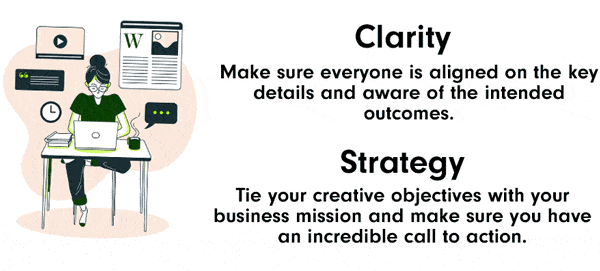If you’re going to succeed in making videos for your business, you’ll need to assemble your resources, goals and requirements in a video brief first.
As tempting as it is to point and shoot straight away, writing a video brief helps you pen your thoughts into a document clearly. In doing so, a video brief can:
– Present your message succinctly
– Inspire action
– Save time and resources
– Drive results
– Set outcomes clearly
Everyone has a different vision for what the campaign will look like, so writing a clear brief is the best way to consensus from your team – and to ensure that everyone thinks through the project in its entirety.
But what makes a good video brief?

A brilliant brief will include:
Brand voice
How do you want to come across in the video? Persuasive, authoritative or emotional? Setting a tone of voice helps creators determine how you want your audience to respond to your video.
Budget
If you don’t have a budget signed off yet, a ballpark will do to set realistic resources and goals.
Background
Any previous video content, your competitor’s videos or videos that you admire is useful for creators in gauging your likes and dislikes.
Audience analysis
No-one understands your audience as well as you do, so any additional brand market research, stats or data is helpful so that a creator can devise concepts that compel your audience into taking action.
Brand deliverables
What type of video variations is required and how will they be measured and optimised?
This template will help you form a comprehensive video brief – saving you from wasting time and invaluable resources. A good production team will respond with more than a quote. They may provide suggestions for a creative approach, deliverables for your chosen platforms and video marketing campaign advice.
Free video brief!
Let’s take a look at your video brief in detail.
Campaign objectives and messaging
Your campaign objectives should be clear and realistic, and your campaign messaging should deliver your objectives succinctly. Ask yourself this:
- What are you want to achieve with this campaign?
- How do you want your audience to react – and what do you want them to do?
- What’s your idea of success for the project?
- What are your key messages?
It’s a common assumption that the goal of making a video is for views and website traffic. But your campaign objectives should be more specific and address the strategy and purpose behind making a video. Are you trying to sell more products or launch a brand to the public? Drive more buyers into signing up to a service? Alter your brand’s image?
Campaign deliverables
Gone are the days of making one video and hitting ‘publish’ once. Ensure that you hit the right platforms with multiple outputs for your video. What versions will you need for different platforms on social media? Will you need a sound off video banner for a landing page? Or go through Clearcast for a video fit for a TV ad?
People interact with platforms in unique ways. They may be primed for a viewing experience, searching for solutions, or want to be entertained or informed. By presenting your video in different variations across multiple channels, you’re more likely to engage and interact with your audience as a result.
Competitors
Who are your main competitors? What’s their USP? What makes them exactly the same as other competitors in your field? What do you like or dislike about their videos?
Current challenges
If you’re launching a product or brand in a busy space, what is the marketplace like for you? If you have a innovative business and can’t identify competitors, is there a brand that you admire that you’d like to emulate? Relevant market background, brand performance and any research that you can share can really help creators understand more than where you want to be.
Approach and tone of voice
How open are you to a new approach? Will it be a departure from your previous video campaigns? Do you prefer live action or animation? If so, any styles in particular? Or are you willing to take risks and experiment with a more mould-breaking concept?
While there are safe go-to styles, we always encourage clients to push boundaries and try out new approaches not seen in their industry or competitor space. Too many ‘same-y’ video styles will not only hinder video views, but potential customers are less likely to associate your video with your brand.
Don’t forget: your tone should always fit your campaign messaging, so be sure that the voice you’re going with is one that your audience wants to hear, and reflects their brand memory and personas.
Your USP
On to you and your brand. What defines you as a brand and what makes you unique? Creatives will want to respond with a brief that focuses on how much value you will deliver to your customers, so make sure you’re not selling a far-reaching campaign message that undersells and undermines your brand.

Target audience
Who are your audiences and are there multiple buyer personas? What essential information do they need to know about you that can help fix their problem? We often refer to the Hero, Hub, Help framework to determine video content for audiences at the right time, so be sure to understand what stage they are at in the sales funnel.
Call to action
What is the main call to action on your video? What do you want your audience to do after watching your video? It’s essential to place a call to action. If your goal is brand awareness, a call to action may simply be for customers to get to know you more by watching the video in full, visiting a social media page or your website.
Measuring video effectiveness
Most often, video views and website traffic are used to measure the success of the video. But ultimately driving sales and building brand loyalty are the key motivators for internal buy-ins. Your desired outcomes may not be achievable with video views alone, so be sure to highlight other ways to measuring video effectiveness. Could you measure by using Facebook brand recall? Or measure against industry CTR? Perhaps measure how much of a video is viewed in its entire duration against a optimised second version?
Media spend budget
When writing a video brief for a paid campaign, what kind of media spend budget do you have in mind? Will you test the waters with a low budget over a few months? Or do you plan to release multiple video campaigns across the year? Perhaps you’ll spread the cost among search and social?
While there’s much to be gained from making the most out of native video uploads, paid campaigns can really project your brand into the screens of relevant, targeted customers that have yet to discover your brand.
Timelines
Not all campaigns are video-first, so if this video fits in with a wider marketing campaign, declare all timelines where possible so that your creative is able to meet your deadlines.
Taking the time to write a video brief can save you time and resources during a project. After you’ve sent out your brief, expect a creative to respond with a creative proposal that may come with concepts as well as a price. Once you’ve shortlisted an agency, videographer, or a concept internally, prep for your initial meeting with story or mood boards, and don’t forget to refer back to the brief throughout the production process!
We love a good creative video brief, so if you’d like to send it over to Skylark, please do so here. Good luck!

